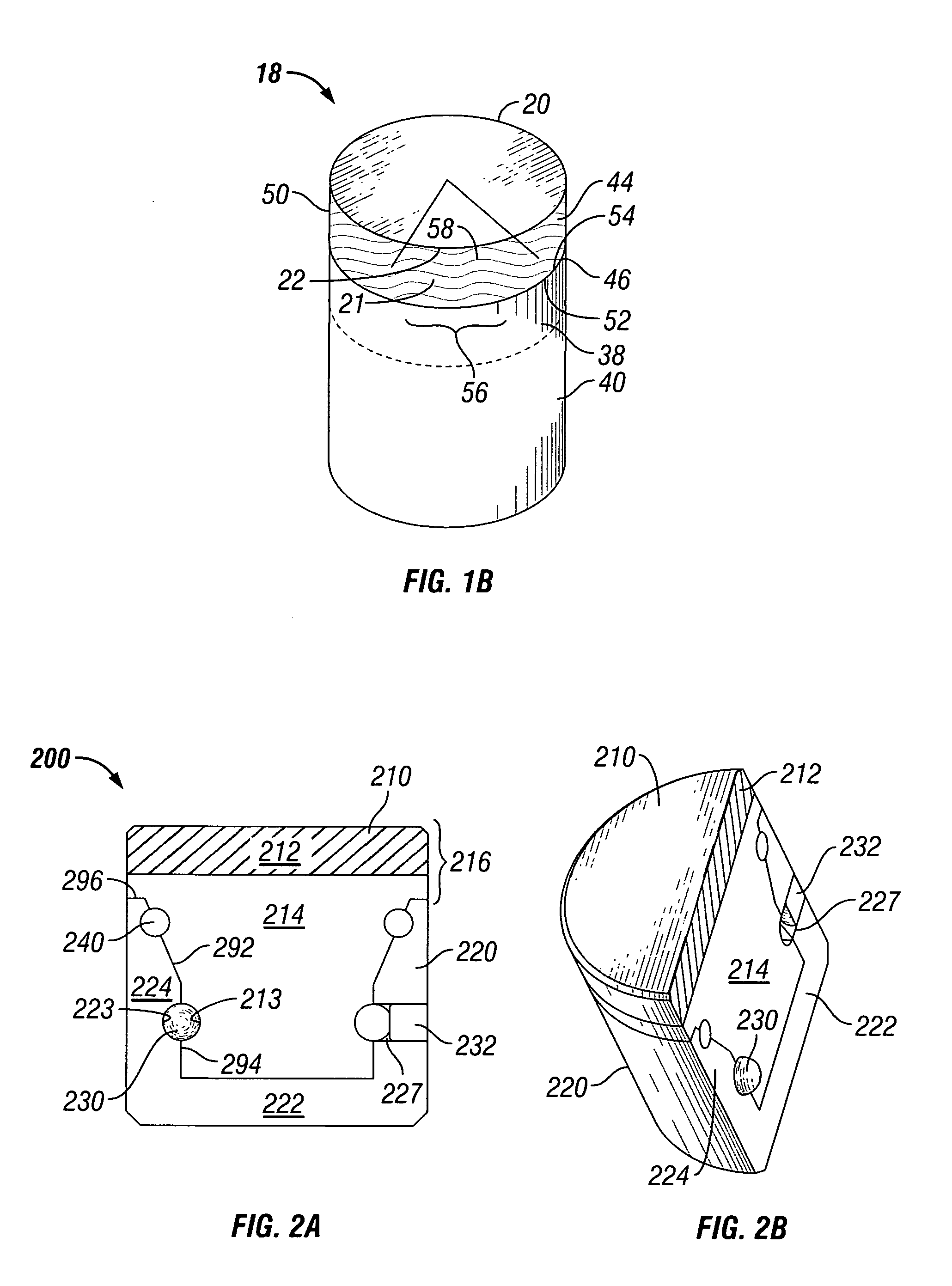Rolling cutter
a cutter and rolling cutter technology, applied in drill bits, earthwork drilling and mining, construction, etc., can solve the problems of cutter failure, deterioration of diamond table, ultra hard layer structural failure,
- Summary
- Abstract
- Description
- Claims
- Application Information
AI Technical Summary
Benefits of technology
Problems solved by technology
Method used
Image
Examples
Embodiment Construction
[0052]In one aspect, embodiments disclosed herein relate to rotatable cutting structures for drill bits. Specifically, embodiments disclosed herein relate to a cutting element that includes an inner rotatable cutting element and an outer, static support element, wherein a portion of the inner rotatable cutting element is surrounded by the outer support element.
[0053]Generally, cutting elements described herein allow at least one surface or portion of the cutting element to rotate as the cutting elements contact a formation. As the cutting element contacts the formation, the cutting action may allow portion of the cutting element to rotate around a cutting element axis extending through the cutting element. Rotation of a portion of the cutting structure may allow for a cutting surface to cut the formation using the entire outer edge of the cutting surface, rather than the same section of the outer edge, as observed in a conventional cutting element.
[0054]The rotation of the inner rot...
PUM
| Property | Measurement | Unit |
|---|---|---|
| thickness | aaaaa | aaaaa |
| distance | aaaaa | aaaaa |
| temperatures | aaaaa | aaaaa |
Abstract
Description
Claims
Application Information
 Login to View More
Login to View More - R&D
- Intellectual Property
- Life Sciences
- Materials
- Tech Scout
- Unparalleled Data Quality
- Higher Quality Content
- 60% Fewer Hallucinations
Browse by: Latest US Patents, China's latest patents, Technical Efficacy Thesaurus, Application Domain, Technology Topic, Popular Technical Reports.
© 2025 PatSnap. All rights reserved.Legal|Privacy policy|Modern Slavery Act Transparency Statement|Sitemap|About US| Contact US: help@patsnap.com



